本文是基于《Python数据分析与挖掘实战》的实战第14章《基于基站定位数据的商圈分析》做的分析。
1 挖掘背景及目标
从某通信运营商提供的特定接口解析得到用户的定位数据。利用基站小区的覆盖范围作为商圈区域的划分,归纳出商圈的人流特征和规律,识别出不同类别的商圈,选择合适的区域进行运营商的促销活动
2 数据预处理
2.1 数据标准化
查看部分数据
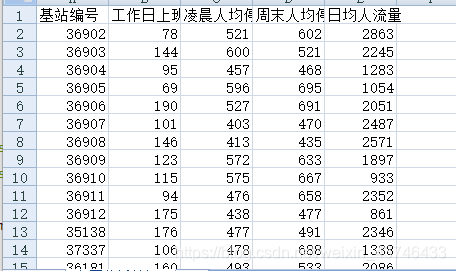
#数据标准化到[0,1]
import pandas as pd
#参数初始化
filename = '../data/business_circle.xls' #原始数据文件
standardizedfile = '../tmp/standardized.xls' #标准化后数据保存路径
data = pd.read_excel(filename, index_col = u'基站编号') #读取数据
data = (data - data.min())/(data.max() - data.min()) #离差标准化
data = data.reset_index()
data.to_excel(standardizedfile, index = False) #保存结果
3.建立模型
#谱系聚类图
import pandas as pd
#参数初始化
standardizedfile = '../data/standardized.xls' #标准化后的数据文件
data = pd.read_excel(standardizedfile, index_col = u'基站编号') #读取数据
import matplotlib.pyplot as plt
from scipy.cluster.hierarchy import linkage,dendrogram
#这里使用scipy的层次聚类函数
Z = linkage(data, method = 'ward', metric = 'euclidean') #谱系聚类图
P = dendrogram(Z, 0) #画谱系聚类图
plt.show()
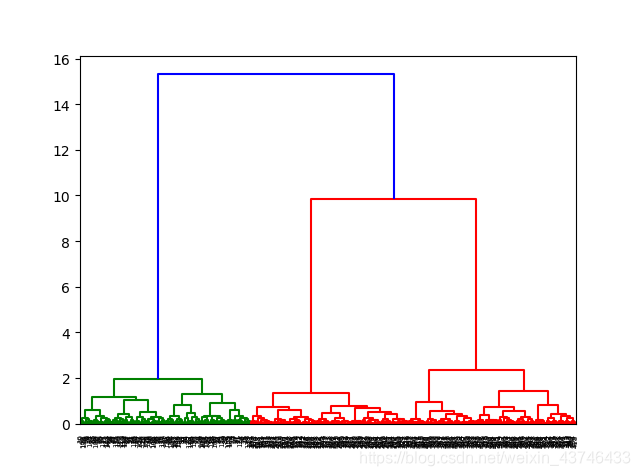
由图可见,聚类可分为3类
#层次聚类算法
import pandas as pd
#参数初始化
standardizedfile = '../data/standardized.xls' #标准化后的数据文件
k = 3 #聚类数
data = pd.read_excel(standardizedfile, index_col = u'基站编号') #读取数据
from sklearn.cluster import AgglomerativeClustering #导入sklearn的层次聚类函数
model = AgglomerativeClustering(n_clusters = k, linkage = 'ward')
model.fit(data) #训练模型
#详细输出原始数据及其类别
r = pd.concat([data, pd.Series(model.labels_, index = data.index)], axis = 1) #详细输出每个样本对应的类别
r.columns = list(data.columns) + [u'聚类类别'] #重命名表头
import matplotlib.pyplot as plt
plt.rcParams['font.sans-serif'] = ['SimHei'] #用来正常显示中文标签
plt.rcParams['axes.unicode_minus'] = False #用来正常显示负号
style = ['ro-', 'go-', 'bo-']
xlabels = [u'工作日人均停留时间', u'凌晨人均停留时间', u'周末人均停留时间', u'日均人流量']
pic_output = '../tmp/type_' #聚类图文件名前缀
for i in range(k): #逐一作图,作出不同样式
plt.figure()
tmp = r[r[u'聚类类别'] == i].iloc[:,:4] #提取每一类
print(len(tmp))
for j in range(len(tmp)):
#print(len(tmp))
#print(j)
plt.plot(range(1, 5), tmp.iloc[j], style[i])
plt.xticks(range(1, 5), xlabels, rotation = 20) #坐标标签
plt.title(u'商圈类别%s' %(i+1)) #我们计数习惯从1开始
plt.subplots_adjust(bottom=0.15) #调整底部
plt.savefig(u'%s%s.png' %(pic_output, i+1)) #保存图片
plt.show()
演示如下:
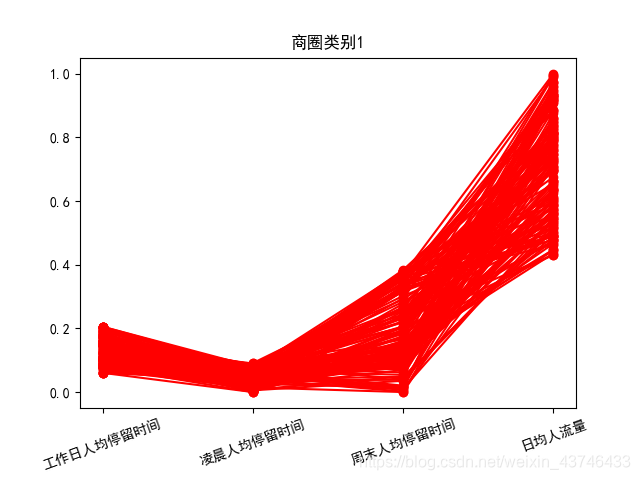
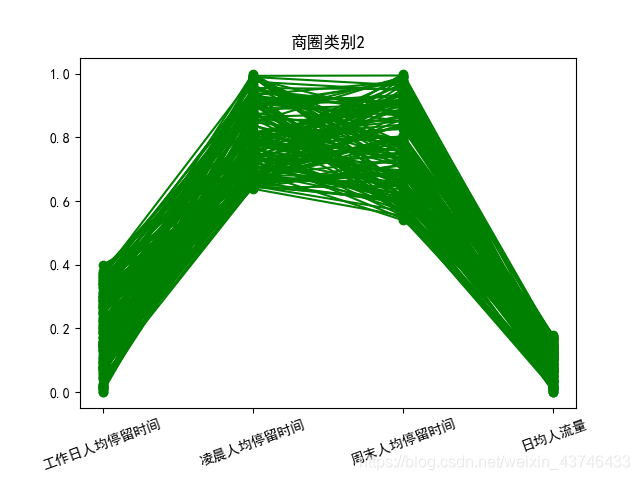
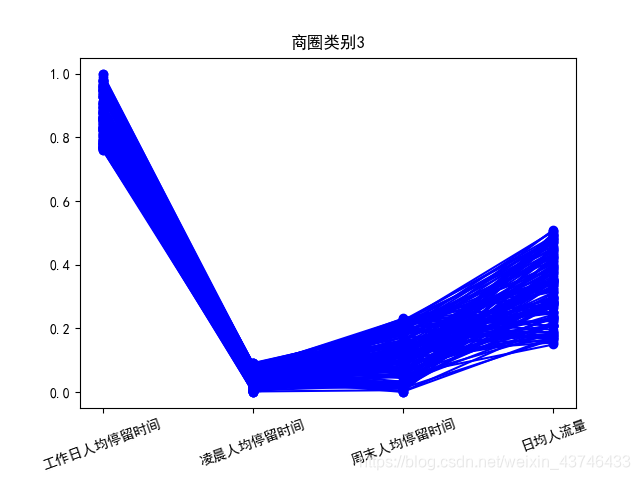








 本文基于基站定位数据,通过谱系聚类分析,将商圈分为三类,并详细展示了各类商圈的人流特征和规律,为运营商促销活动提供数据支持。
本文基于基站定位数据,通过谱系聚类分析,将商圈分为三类,并详细展示了各类商圈的人流特征和规律,为运营商促销活动提供数据支持。

















 被折叠的 条评论
为什么被折叠?
被折叠的 条评论
为什么被折叠?








